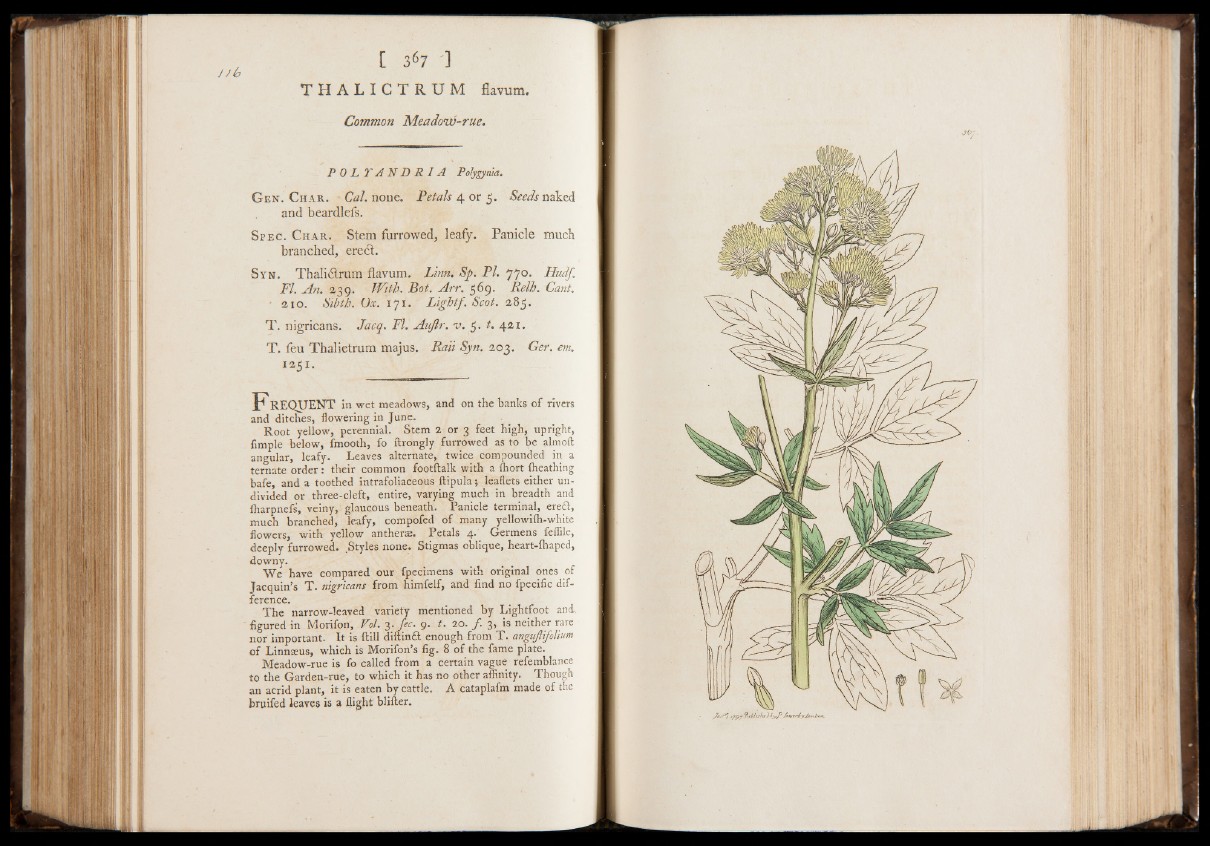
[ 367 '3
T H A L I G T R U M flavum.
Common Meadow-rue.
J J b
P O L Y A N D R I A Polygynia.
G en. Char. ■ Cal. none. Petals 4 or 5. Seeds naked
and beardlefs.
S p e c . C h a r . Stem furrowed, leafy. Panicle much
branched, eredt.
S y n . Thalidlrum flavum. Linn. Sp. PL 770. Hudf.
FI. An. 239. With. Bot. Arr. 569. Relh. Cant.
■ 210. Sihth. Ox. 171. Lightf. Scot. 285.
T. nigricans. Jacq. Fl. Außr. v. 5. t. 421.
T. feu Thalietrum majus. Rail Syn. 203. Ger. em.
1251.
F REQUENT in wet meadows, and on the banks of rivers
and ditches, flowering in June.
Root yellow, perennial. Stem 2 or 3 feet high, upright,
Ample below, fmooth, fo ftrongly furrowed as to be almoft
angular, leafy. Leaves alternate, twice compounded in a
ternate order: their common footftalk with a fhort fheathing
bafe, and a toothed intrafoliaceous ftipula; leaflets either undivided
or three-cleft, entire, varying much in breadth and
fharpnefs, veiny, glaucous beneath. Panicle terminal, erect,
much branched, leafy, compofed of many yellowifh-white
flowers, with yellow antherae. Petals 4. Germens feflile,
deeply furrowed. .Styles none. Stigmas oblique, heart-fhaped,
downy.
We have compared our fpecimens with original ones of
Jacquin’s T. nigricans from himfelf, and find no fpecific difference.
The narrow-leaved variety mentioned by Lightfoot and*
figured in Morifon, Vol. 3. fee. 9. t. 20. / . 3, is neither rare
nor important. It is ftill diftin£t enough from T. angujlifolium
of Linnaeus, which is Morifon’s fig. 8 of the fame plate.
Meadow-rue is fo called from a certain vague refemblance
to the Garden-rue, to which it has no other affinity. Though
an acrid plant, it is eaten by cattle. A cataplafm made of the
bruifed leaves is a flight blifter.